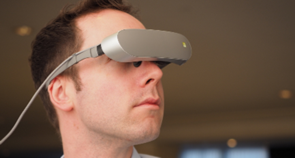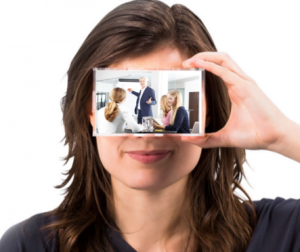“For the things we have to learn before we can do them, we learn by doing them” – Aristotle
GPB have just started working with ElexaVR on developing some innovative training techniques that involve a deep immersion into Virtual Reality (VR). So we asked Matt Kalkman there to explain what it’s all about:
This is a big year for Virtual Reality (VR). Facebook’s Oculus Rift is set to make a big splash, Samsung is already giving away free headsets with new phone purchases, and all of the major phone companies are investing large amounts of resources into this emerging market.
 We are just starting to see the potential of what will be possible in this space. We at ElexaVR are especially excited about the possibilities in L&D (Learning and Development). Companies such as ours are bringing big innovations to this area of corporate training.
We are just starting to see the potential of what will be possible in this space. We at ElexaVR are especially excited about the possibilities in L&D (Learning and Development). Companies such as ours are bringing big innovations to this area of corporate training.
VR could potentially cause a paradigm shift in corporate training. The question naturally turns to: why VR? It claims its main benefits are faster turnaround times in putting knowledge into practical use, and longer and greater retention of skills learned. VR’s proper implementation will improve productivity while saving costs. What makes it such a fruitful tool is its effectiveness in active, experiential and mobile forms of learning.
The great bonus to L&D is that the technology has already been paid for. Almost everyone already has a smartphone in their pocket or handbag.
To understand the process, and why it might be so useful in practice, it is important to look at the field of experiential learning.
Experiential learning stems from research by John Dewey, David Kolb, Kurt Lewin, Jean Piaget, William James, and others. Two worth reflecting on here are Kurt Lewin and David Kolb: Kurt Lewin was the first to suggest that knowledge is formed by the learner when they have the time to reflect on a scenario they have just experienced.
 It is the time between the experience and the experimentation that allows the formation of meaningful knowledge. This time is the key to virtual reality learning, as it is the only environment that allows room for experiential simulation through to experimentation. The research of David Kolb has gone further into the learning styles model, which describes a staged process. The core of the model revolves around four stages to transform information into useable knowledge.
It is the time between the experience and the experimentation that allows the formation of meaningful knowledge. This time is the key to virtual reality learning, as it is the only environment that allows room for experiential simulation through to experimentation. The research of David Kolb has gone further into the learning styles model, which describes a staged process. The core of the model revolves around four stages to transform information into useable knowledge.
The first stage is the experience itself. The second is a proper amount of reflection time on the experience. The third is the formation of abstract concepts and generalizations.
The fourth is to put that into active experimentation. The experience then repeats itself. VR successfully manages the entire cycle in one sitting. Other forms of e-learning do not provide the feeling of experiencing an issue in the first place.
Training can be an expensive endeavour, and having a process that goes through a proper step-by-step experiential form of learning will bring great savings to any organization.
Furthermore, there are other key gaps in traditional forms of e-learning. Three gaps that will immediately be closed are: attention gaps; time-effectiveness gaps; and pedagogical gaps. Interrupting the flow of learning is a major detriment to creating useable knowledge.
In the era of distraction, current forms of e-learning do nothing to overcome this gap. With virtual reality, the learner is placed directly into an environment that commands their complete attention. For most forms of learning another major issue is that they don’t allow the learner to immediately try newfound information in a practical experience.
How does the system operate?
ElexaVR can offer tailor-made training designed specifically for your organization. Upon deciding the direction of training, we work to produce a complete visually immersive training program. The training will be delivered through a specially designed app that can be accessed by anyone on their smartphones.
There are currently two options for viewing: one option is to purchase electronic headsets; the more affordable approach is to purchase specially designed cardboard headsets (that could have your company’s logo printed on the outside).
These small investments pay large dividends to the productivity of your organization, and the overall savings on learning and development costs. So stay tuned, it’s a big year ahead for VR.
Matthew Kalkman

